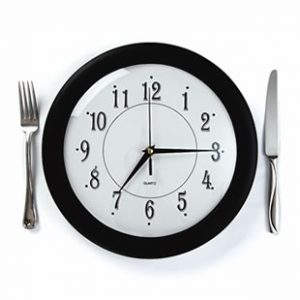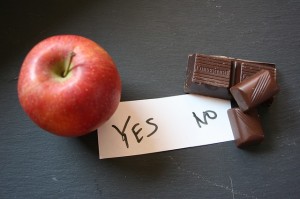Dieting can be hard to keep up with, especially if you’re someone who’s incredibly busy or you happen to be on a budget – Most diet plans consist of you (cooking and) eating five to seven small meals a day, and some of them have you working out – Who really has time for all of that? Truthfully, most people don’t. It’s one of the many reasons a lot of diets fail even.
So, if you’re super busy or you don’t have the money to eat a completely whole and organic diet (and/or take supplements), what are you supposed to do? You may have thought up until this point that your efforts would always remain hopeless, but you’re wrong! The Eat-Stop-Eat plan might be exactly what you’ve been searching for to get you to your ideal weight without you having to spend a whole lot of time and money on special foods.
 What is The Eat-Stop-Eat Plan?
What is The Eat-Stop-Eat Plan?
The Eat-Stop-Eat Plan is an intermittent fasting type of eating plan described as “The absolute laziest way to get a flat belly.” And while that might be true to some extent, it’s really going to come down to what you’re eating.
The general idea behind this eating plan is that you get to eat basically whatever it is you’re eating now for five days out of the week and for the other two, you’re going to fast (you’ll still be able to drink water and herbal tea, but that’s about it). By skipping eating for those 48 hours of the week, you can successfully reduce your caloric intake by up to 25%.
You can choose any two days of the week for fasting, as long as they’re not in a row. You need at least one eating day between the 24-hour fasts. Also, since weekends are usually when we go out, meet friends, attend events, etc., they’re really not the best time to set your fast days.
When I Say Whatever You’re Eating Now…
I don’t necessarily mean it. Let’s face it: There is no magical weight loss solution. Regardless of what eating plan you choose, you will have to put a little effort behind it if you want to see some results. Fasting for two days isn’t going to make a whole lot of difference if you’re spending the other five pounding back double big macs like they’re about to go off the menu and rinsing them down with milkshakes. Like with any other diet, you will want to make healthy choices if you want to see results (and to help get your body through the fasts without crashing) on the Eat-Stop-Eat plan.
 Worried About Getting Hungry
Worried About Getting Hungry
Choosing the right foods – Especially the day before you plan to fast – is important, but 24 hours is a long time not to eat, isn’t it? Not really, when you’re fasting at night. On the Eat-Stop-Eat plan, you start fasting around 8pm (after you’ve eaten most if not all of your food for the day, anyway). You fast until the next day at 8pm, so while you’re going 24 hours without food, it doesn’t feel like you’re going for a full day (since you’ll get to eat on both days anyway, and you’ll be sleeping in between).
By now you probably want to know what kind of results you should be seeing, right? If you’re not changing your eating patterns, you might lose 2-3 lbs for the first couple of weeks, but it won’t be long before your body realizes what’s up and plateaus. However, if you’re eating healthy (and/or low carb), following the plan, and remembering to get plenty of exercise whenever you can, your results will obviously be greater.
Is It Safe?
Like any intermittent fasting diet, it’s safe if your body can maintain a nutritional balance. Suppose you’ve never been on any sort of fasting diet before. In that case, you should definitely make an appointment with your healthcare professional or holistic nutritionist to schedule a blood test to ensure that you’re not hyper/hypoglycemic or anything else that could make this diet dangerous to your body.
Ultimately, you need to listen to your body. It’s natural to feel moody or have a headache because you’re hungry, but you shouldn’t ever feel like you’re about to pass out and continue to fast because “that’s how the diet works”.
 Does It This Diet Work?
Does It This Diet Work?
Back in the times when humanity didn’t had supermarkets, grocery stores and frozen dinners, the man had to hunt and gather his food. Since both of these activities are quite time-consuming and food could often be difficult to find – especially during the cold season and harsh climates – we were forced to go through lengthy periods of time in between meals. We were certainly not eating 5 to 7 small meals a day.
And when we found food we ate like there was no tomorrow.
Intermittent fasting (including this plan) is not just about calorie restriction. It’s about giving your stomach and body the chance to use some of that stored fat for energy. And that doesn’t happen if there’s ALWAYS some food in your stomach.
Also, when you eat in a fasted state ( meaning your body has already consumed all the glucose in your blood and is using stored fat as a primary source for energy, a state known as ketosis) your organism is better prepared to receive all of those nutrients, so you’ll be able to absorb them at a higher rate than normal.
While it’s not a fixed eating plan, you should try to increase your awareness on the foods you’re eating. Focusing on whole and preferably organic foods, cooked in healthy ways, is always better than a diet rich in processed foods and sugary drinks. As long as you don’t have any type of health problem that wouldn’t allow you to go for a 24-hour fast, Eat-Stop-Eat is a reliable way to lose weight.
Eat-Stop-Eat is a perfectly viable eating plan even if you’re working out – in fact, it’s even more effective when combined with regular physical exercise. Just schedule your workouts at the end of the fast so you can get a meal as soon as the workout is over to help your body recover after the effort.
Last, but not least this plan only asks of you to be mindful of the foods you eat – you won’t need to count calories or cut entire food groups out of your diet. It’s certainly convenient if you’re someone that’s super busy and doesn’t have the time to eat five meals a day or if you’re on a budget and looking to lose a couple of pounds, you just might want to give this eating plan a shot (after seeing your doctor to make sure that it’s the right kind of diet for you).
Have you ever tried the Eat-Stop-Eat Plan or any other intermittent fasting eating plan? Did you see any results? If so, how long did it take before you saw them? We’d love to hear your personal accounts!

 What is The Eat-Stop-Eat Plan?
What is The Eat-Stop-Eat Plan? Worried About Getting Hungry
Worried About Getting Hungry Does It This Diet Work?
Does It This Diet Work?